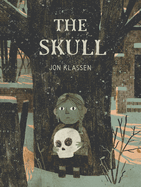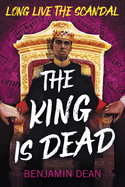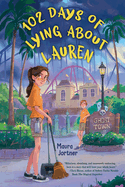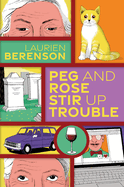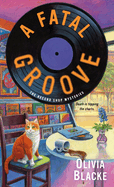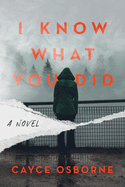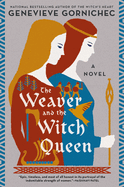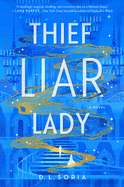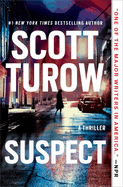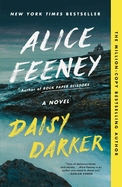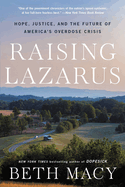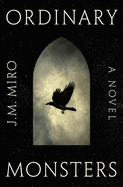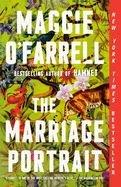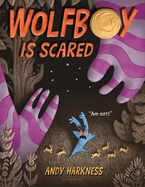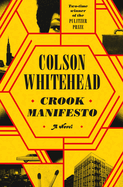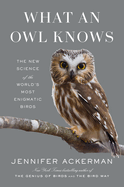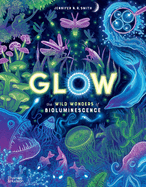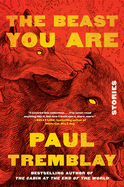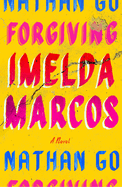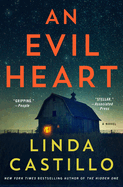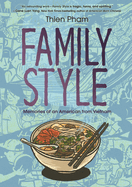Friday, July 28, 2023
We have a page-turning array of mysteries and thrillers this week, including Mrs. Plansky's Revenge, Spencer Quinn's "briskly plotted nail-biter," whose unexpected twists and turns are nicely balanced by the heroine's memories of her husband; I Know What You Did, Cayce Osborne's "gripping and empathetic thriller," in which a woman retraces her past after a bestselling book accuses her of a 30-year-old murder; plus Suspectby Scott Turow and Daisy Darker by Alice Feeney, now in paperback and beach- or hammock-ready.
In The Writer's Life, author and artist Jon Klassen discusses what his picture book The Skull(reviewed in this issue) owes to P.D. Eastman, as well as his Top 10 visual artists.
How to Love Your Daughter
by Hila Blum, transl. by Daniella Zamir
Hila Blum's English-language debut, How to Love Your Daughter, translated from the original Hebrew by Daniella Zamir, opens with the protagonist explaining, "The first time I saw my granddaughters, I was standing across the street, didn't dare go any closer." As Yoella looks through the window, watching her daughter Leah's family without their knowledge, readers begin to understand that something has gone terribly wrong. The rest of the novel is Yoella's dissection of their relationship, an attempt to identify the first fissures that led to the seemingly unbridgeable gap between mother and daughter.
Blum's deft hand guides this riveting novel, crafting a narrative voice that is simultaneously heedless and measured, an almost breathless tumble of memories portioned out sparingly. Yoella's frank evaluation of her strengths and shortcomings makes her a trustworthy source, even as she deals in shadows and uncertainties. Making frequent references to books she has read, Yoella sees herself in characters like a woman with two daughters: "she loved them and, at the same time, didn't know how to love them. And there's the rub, the problem with love. She tried." Thus, Yoella's narrative turns the title on its head; it is no how-to book, no confident list of things to do or not do. Instead, How to Love Your Daughter is a muddied reflection of the complexities of motherhood--the worry, the effort, the failings, and the love. Hand this one to fans of Jenny Offill or those interested in the ambiguities and incongruities of love. --Sara Beth West, freelance reviewer and librarian
Discover: Hila Blum's riveting novel How to Love Your Daughter is a muddied reflection of the complexities of motherhood--the worry, the effort, the failings, and the love.
Namaste Trump & Other Stories
by Tabish Khair
Indian poet, essayist, and author Tabish Khair (The Thing About Thugs) nimbly interrogates relationships both enabled and sundered by religious and socioeconomic divides in Namaste Trump & Other Stories. This magnificent collection opens with "Night of Happiness," a sly yet ultimately devastating novella featuring a Hindu businessman and his longstanding Muslim employee responsible for much of the company's success. Ahmed is a tireless worker whose only request has been to celebrate Shab-e-Barat, the Muslim festival "night of happiness," at home with his wife. A visit to Ahmed's flat one rainy afternoon morphs into a poignantly haunting mystery.
Hindu-Muslim tensions permeate three interconnected stories--"The Corridor," "The Ubiquity of Riots," and "Elopement"--told from the perspective of Sameer, an only child so protected that he sleeps in his parents' room until he's 12. Theirs is a privileged, albeit minority, Muslim family in a small town that has been their home for generations; but longevity doesn't mean acceptance. That story trio brilliantly sets up "Olden Friends Are Golden," in which 50-something Sameer remains connected via WhatsApp group chat to childhood friends who are quick to dismiss some of their own because they are not a "good" Muslim, "like Sameer." In the titular "Namaste Trump," an ad executive readily dismisses his "goofy" devoted servant as India goes into pandemic lockdown, but his callous disregard turns into karmic torment.
"I had to tell my story," one protagonist declares. Khair proves to be an elegant, diligent conduit for all of his characters, as he records incidents of desperate sacrifice, casual disregard, blind denial, and generational trauma to create an unforgettable mosaic of human frailty and unforgivable inhumanity. --Terry Hong, Book Dragon
Discover: Tabish Khair presents a stellar novella with nine additional superb stories that brilliantly, hauntingly expose religious and socioeconomic differences.
Wildwood Magic
by Willa Reece
Wildwood Magic by Willa Reece (Wildwood Whispers), a story about the healing magic of community and the very human evils that make healing magic necessary, immerses readers in the rhythms of a small Appalachian town and the ecstasy of breaking free from abuse and oppression.
Raised by the Sect, a cult that demands submission and silence from its female members, Rachel now finds herself pregnant by her husband, Ezekiel Gray, the Sect preacher who constantly beat her and took pleasure in her pain. She makes her way to an apple orchard on the edge of Morgan's Gap in the Appalachian Mountains, where she is taken in by Mary May, places her daughter in the care of a trusted friend of Mary's, and hides in Mary's cottage for a few years. When Mary disappears and leaves instructions for Rachel to take care of the orchard, Rachel connects with other wisewomen and woodsmen, learning about the magic of the wildwood and the energy infusing the women's craftwork--while also learning about herself and who she wants to be. But then a summer-long Sect revival brings Ezekiel and his hateful rhetoric to Morgan's Gap, and danger threatens Rachel, her daughter, her new circle of friends, and the whole town.
Rachel's voice shines in this first-person narrative interspersed with sections from other characters' perspectives, including that of Ezekiel. Filled with all-too-real hatred and prejudice, Reece's second Wildwood novel also brims with love, hope, and the magical power of womanhood and community. --Dainy Bernstein, postdoc in children's literature, University of Illinois Urbana-Champaign
Discover: Magic shimmers throughout this novel about the human capacity for evil and the power of women and community.
The Bookbinder
by Pip Williams
The Bookbinder, Pip Williams's deliciously literary second novel, takes readers into the complex lives of the "bindery girls" at Oxford University Press during World War I.
Since she left school to work alongside her twin sister, Maude, in the bindery, Peggy Jones has longed to study the books whose pages she folds. But, after the death of their mother, Peggy must look after Maude, who is possessed of nimble fingers and an unusual brain, but unable to handle most household tasks on her own. War comes to Europe and Belgian refugees flood into Oxford. Peggy and Maude find their safe world upended: first by the exodus of dozens of men they know, and then by the arrival of two Belgians, wounded soldier Bastiaan and librarian Lotte.
Williams returns to the world she created in The Dictionary of Lost Words, which includes some familiar characters along with a new ensemble cast revolving around Peggy and Maude, their colleagues at the press, and the refugees and students they encounter. Peggy is forced to confront her desire for love, and her long-held dream to study at Somerville College, while Maude listens to the war news, folding pages into intricate origami. Williams sensitively explores wartime trauma through Lotte's and Bastiaan's experiences, and highlights the longstanding "town and gown" divide in Oxford, which fuels Peggy's fears--and ambition--regarding her academic dreams. Incisive and richly detailed, with as many layers as the books Peggy folds, The Bookbinder is a captivating historical novel and a tribute to the multifaceted power of words. --Katie Noah Gibson, blogger at Cakes, Tea and Dreams
Discover: Pip Williams's second layered and deliciously literary novel explores the lives and dreams of twin sisters working in the Oxford University Press bindery during World War I.
Mystery & Thriller
Mrs. Plansky's Revenge
by Spencer Quinn
With Mrs. Plansky's Revenge, Spencer Quinn (Of Mutts and Men; Paw and Order; A Fistful of Collars) launches a dynamic series featuring an aging heroine who becomes embroiled in an adventurous mystery.
Recent widow Mrs. Loretta Plansky, a 71-year-old tennis player, is discerning and spry. She and her husband, Norm, were a sophisticated couple who made millions with their unlikely invention of a "toaster knife," a knife that actually toasts bread while you slice it. However, their retirement didn't quite go according to plan. After Norm died, Mrs. Plansky, hip replaced, decided to downsize. She moved from their large home into a new residence, an "itty-bitty" condo on Little Pine Lake.
When tired and spent Mrs. Plansky receives a frantic, distressing phone call from someone whom she believes is her grandson--he needs $10,000 to post bail for a DUI arrest--she gives him what he asks for without question. Mrs. Plansky later learns, however, that the call was a fraud perpetrated by overseas criminals who proceeded to wipe out her entire nest egg. When the police and FBI conclude they don't have enough evidence to solve the crime, Mrs. Plansky becomes intent on taking charge and seeking justice.
Quinn's briskly plotted nail-biter takes unexpected twists and turns that are nicely balanced by Mrs. Plansky's memories of her husband. Fearless Mrs. Plansky barrels past her comfort zone, setting off to Romania, where she plunges headlong into danger. Her age never becomes a detriment. Rather, she works it to her advantage, employing great ingenuity to solve a crime that elevates her into an immensely likable, wholly appealing heroine. --Kathleen Gerard, blogger at Reading Between the Lines
Discover: Mrs. Plansky's Revenge is a fresh, dynamic cozy in which a strong, likable 71-year-old Florida widow is scammed of her life savings and sets off on a quest for justice.
Peg and Rose Stir Up Trouble
by Laurien Berenson
Laurien Berenson offers another warm and fuzzy cozy mystery in Peg and Rose Stir Up Trouble, the second novel in her comical Senior Sleuths series set in the Connecticut suburbs. Readers don't need to be familiar with the first book, Peg and Rose Solve a Murder, in which Berenson introduced tough and feisty Peg Turnbull and sweet-natured, eternally optimistic Rose Donovan. The once-estranged sisters-in-law, now senior citizens, are unlikely friends after years of not speaking to each other. Peg is a widowed poodle breeder and a "popular and highly esteemed dog show judge," while Rose, a former nun, now runs a woman's shelter with her husband, an ex-priest.
Peg responds with disdainful skepticism when Rose gives her sister-in-law's stagnant romantic life a push by signing her up for "Mature Mingle," a dating service. But then Peg meets and falls for "witty and urbane" Nolan Abercrombie, and things take a surprisingly glad turn--until Nolan dies in a hit-and-run accident. Grieving Peg attends his funeral with Rose, and the two notice that all the mourners are women around their same age. Why is that? Peg and Rose put their amateur sleuthing skills to work, piecing together clues into who Nolan really was. Might his death not have been an accident? And if it wasn't, who might've wanted him dead--and why? Clever and sharp twists and turns--tracked by two spunky retiree protagonists--will once again charm and delight cozy mystery lovers. --Kathleen Gerard, blogger at Reading Between the Lines
Discover: Peg and Rose Stir Up Trouble, the second entry in a delightfully fun cozy series, stars retired sisters-in-law who investigate the sudden death of a man Peg meets on a dating website.
A Fatal Groove
by Olivia Blacke
Olivia Blacke's entertaining second entry in the Record Shop Mystery series, A Fatal Groove, takes readers back to Cedar River, Tex., for another adventure involving lattes, LPs, local color, and murder. Juniper "Juni" Jessup and her sisters, Maggie and Tansy, work hard to get their new record-shop/café, Sip & Spin, off the ground. But when Bob Bobbert, Cedar River's longtime mayor, drops dead after sipping their coffee at the local Bluebonnet Festival, the Jessup sisters fall under suspicion. Juni, undeterred by her detective ex-boyfriend's warnings to let the pros handle it, begins investigating the case, which appears to have ties to a 1956 bank robbery (and may or may not involve her Uncle Calvin).
Blacke (Vinyl Resting Place; No Memes of Escape; Killer Content) packs her story with musical references and amusing nods to Texas lore, including the widely held (mythical) belief that it's illegal to pick bluebonnets. Juni's personal life, including her maybe-something-more relationship with local mail carrier Teddy Garza, gets some airtime, as does her widowed mother's new paramour and his possible connection to the case. Readers will enjoy following Juni's adventures as she tries to figure out who killed Mayor Bob, where the money from the long-ago bank robbery ended up, and what to do with the surprise cow (yes, really) that turns up in her front yard. Cozy mystery lovers and audiophiles alike will appreciate Blacke's story, with an ending as enjoyable as one of Juni's signature coffee creations (like I'll Bean There for Brew or Sweet Chai O'Mine). --Katie Noah Gibson, blogger at Cakes, Tea and Dreams
Discover: Olivia Blacke spins another narrative of local color, LPs, lattes, and murder in her second Record Shop Mystery set in small-town Texas.
The Lady from Burma
by Allison Montclair
Allison Montclair's engaging fifth mystery, The Lady from Burma, draws her crime-solving matchmakers into a case involving a terminally ill client, her entomologist husband, and a lunacy case in the London courts. Gwen Bainbridge and Iris Sparks, proprietors of The Right Sort Marriage Bureau, are surprised to receive a visit from a happily married woman. But it turns out she's come to ensure her husband's future happiness after her death. When the client is found dead in Epping Forest just days later, Gwen and Iris smell foul play. Meanwhile, Gwen is fighting to regain her legal independence and take her seat on the board of her late husband's company. After the sneering guardian who thwarted her every move is also found dead, Gwen herself becomes a suspect, and a few odd coincidences suggest the cases are linked.
Montclair (The Unkept Woman; A Rogue's Company; The Right Sort of Man) explores her protagonists' knotty personal lives alongside the mystery plot: Iris's fear of commitment to the kindhearted gangster she's dating, and widowed Gwen's struggles with self-belief and her reluctance to date any man who's not her late husband. The cases' progression will test both their friendship and the mettle of a sharp young constable from Essex who delves into the client's death. Witty, wry banter between all Montclair's characters; insightful self-reflection from her protagonists; and details of life in London, post-World War II, round out the narrative enjoyably. Though a little thin on matchmaking, The Lady from Burma is a well-plotted entry in Montclair's entertaining series. --Katie Noah Gibson, blogger at Cakes, Tea and Dreams
Discover: Allison Montclair's fifth entry in the Sparks & Bainbridge Mystery series brings together a mysterious client, her entomologist husband, and a lunacy case in the London courts.
I Know What You Did
by Cayce Osborne
In I Know What You Did, Cayce Osborne's gripping and empathetic debut thriller, a woman retraces her disturbing past after a bestselling book accuses her of a 30-year-old murder. Petal Woznewski fills her days with junk food, weed, and an endless stream of mindless movies on Netflix. She keeps everyone in her life at arm's length, including her on-and-off boyfriend, Gus. While her middle-aged character's immaturity at times seems off-putting and even irritating, she has a good reason for her arrested development: when she was in middle school, both of her parents died in an apparent suicide. But that was only the first in a series of traumatic events. A short time later, Petal and her friend Jenny were there when their friend Megan died under mysterious circumstances. When an unknown author pens a fictionalized account of Megan's death that calls Petal out by name, she is forced to return to her hometown to confront the long-kept secrets that changed the trajectory of her life.
As Petal digs deeper into the mystery surrounding the book, she learns new truths about her past--as well as hard lessons that will feel familiar to anyone who has something in their history they would like to forget. "Time is supposed to soften us, give us distance from the people we wronged and the deeds we regret," Petal says. "But it doesn't.... If what you're trying to bury is bad enough, it never sinks, never fades." These periodic insights puncture Petal's disaffected stoner façade and show that she's still a wounded girl who longs for healing--and the vulnerable beating heart of this riveting thriller. --Angela Lutz, freelance reviewer
Discover: In Cayce Osborne's gripping and empathetic thriller, a woman retraces her disturbing past after a bestselling book accuses her of a 30-year-old murder.
Science Fiction & Fantasy
The Sun and the Void
by Gabriela Romero Lacruz
Venezuelan American author Gabriela Romero Lacruz conjures an enthralling new world of gods and monsters in her first novel, The Sun and the Void, a sweeping epic fantasy inspired by South America. Reina is half human, half nozariel--a formerly enslaved bipedal species with prehensile tails--and an orphan. She answers a summons from her grandmother, a powerful sorceress, in the hopes of finding family and a home. Her grandmother serves a wealthy, powerful family of valcos, a vanishing people with antlers and a gift for geomancia, the magic of earth metals. Reina begins learning magic under her grandmother, who longs for a successor "for the legacy [she's] building." Reina admires the kind valco lady of the house and her beautiful young daughter, and will do anything for their approval. When tragedy strikes, Reina's grandmother convinces Don Enrique, head of the valco family, that he can undo the damage by raising a dark god. Elsewhere, half human, half valco Eva Kesaré chafes at the restrictions placed on her by her family, who discourage her from practicing geomancia. Her attempts to break their chokehold on her life will force her path to intersect with Reina's. Both of them engage in a struggle between rival gods that will shake the foundations of the world.
This spellbinding fantasy focuses on political intrigue and family rivalries as well as both friendly and romantic relationships between the women characters. Lacruz develops Reina's world with intricate alliances and histories, fearsome monsters, and opposing religions. This ambitious, thrilling series opener pulses with vitality and imagination. --Jaclyn Fulwood, blogger at Infinite Reads
Discover: Two women are caught up in an ancient struggle between rival gods in this fresh, ambitious epic fantasy.
The Weaver and the Witch Queen
by Genevieve Gornichec
In the historical fantasy The Weaver and the Witch Queen, Genevieve Gornichec (The Witch's Heart) brilliantly strikes a balance between past realities and present sensibilities. Gornichec, without apologizing for or altering the sometimes-harsh realities of Old Norse culture, creates a richly layered world with strong characters and a complex society in this feminist and queer historical fantasy.
Gunnhild escapes her cruel mother at age 12, leaving her blood-sworn sisters, Oddny and Signy, not knowing if Gunnhild is dead or alive. She spends the next 12 years training to become a witch and a seeress, returning to her home only when she witnesses a witch-aided attack on her friends' home. After Signy is taken captive to be sold as a thrall (slave), Gunnhild and Oddny each set out on a quest to rescue her. Along the way, both women fall in love, come close to death several times, and learn more about themselves and their world than they ever expected.
The novel draws on Gornichec's academic background in Norse history, legend, and mythology, but its strength is in the individual characters and the intimate picture it paints of social and political realities that affect the personal. The dialogue is natural to a contemporary ear, making the characters familiar despite the unfamiliarity of their world. Even in epic battle scenes--of which there are quite a few--the focus remains on characters' emotions and relationships. Filled with sea voyages, political intrigue, surprise betrayals, and tender love, this historical fantasy will thrill readers and capture their hearts. --Dainy Bernstein, postdoc in children's literature, University of Illinois Urbana-Champaign
Discover: Stirring and powerful, this historical fantasy explores the boundaries of gender roles and the pressure to conform against a background of politics and betrayal.
Thief Liar Lady
by D.L. Soria
In her first novel for adults, D.L. Soria (Fire with Fire) enchants readers with Thief Liar Lady, a clever fairytale retelling that asks, What if Cinderella was a grifter and spy? The bones of the story are familiar: Lady Aislinn Vincent is raised by her social-climbing stepmother after her father, a minor noble, dies. Ash is made beautiful with the help of magic, and enraptures the prince of Solis at a ball, earning herself a place in the palace as his fiancée.
Soria's princess is no hapless girl, however. Ash's stepmother raised her to be an excellent pretender, so good she can use her wiles and a bit of the magic powder called lustre to ensnare a nobleman. Then she'll secure marriages for her stepsisters, who don't have noble blood, and the status and wealth her stepmother craves. Ash has other ideas. Guided by her Elorian maternal grandmother, Ash is determined to use this opportunity to sway negotiations between Solis and the Elorians they conquered more than 20 years earlier. Now Ash must use every skill and tool she possesses to manage the demands of her stepmother, the expectations of her fiancé's family, and the needs of the Elorian people. When she begins to fall for Lord Verance, the Elorian "hostage prince," Ash finally begins to consider what she wants.
Thief Liar Lady is witty, subversive, and packed with schemes and danger, driven by a compelling heroine trapped between duty and desire. Those who like a side of subterfuge with their romance will enjoy falling for this con artist. --Suzanne Krohn, librarian
Discover: A young woman pulls the ultimate con and finds love in this clever, subversive reimagining of Cinderella.
Performing Arts
Too Late to Stop Now: More Rock 'n' Roll War Stories
by Allan Jones
Allan Jones, a veteran of British music magazines Melody Maker and Uncut, follows Can't Stand Up for Falling Down with Too Late to Stop Now: More Rock 'n' Roll War Stories. Collectively, its 40-odd exuberant pieces tell the tale, rock act by rock act, of the changing of the musical guard in the latter half of the 20th century. But Jones doesn't just write about the old guard being shoved aside by the new order: he was on hand for the shoving. Too Late to Stop Now finds Jones reminiscing about getting drunk with Rockpile, Joe Cocker, and Elvis Costello; snorting cocaine with some Fabulous Thunderbirds; and doing both with Bryan Ferry. He accompanied Rockpile and the Police to gigs. He elicited amusingly petulant grievances from practically everyone, including Bob Geldof, who set Jones straight on the Boomtown Rats' failure to make it in America: "It was what I said in New York about Bruce Springsteen that really killed us."
There's unexpected music in Jones's sentences. (Genesis reminded him "less of a rock band than the bell-bottomed equivalent of the school chess team on an outing to an owl sanctuary.") Also unexpected: the disclosure that concludes Too Late to Stop Now. It's 2021, and Jones is invited to tag along on one last gig but realizes that, although "[f]orty-five years ago... I would have jumped on the bus without a second thought," he would prefer to go home to his memories. How lucky for rock diehards that he shares those memories here. --Nell Beram, author and freelance writer
Discover: Collectively, 40-odd exuberant pieces by a British music magazine veteran tell the tale, rock act by rock act, of the changing of the musical guard in the latter half of the 20th century.
Now in Paperback
Suspect
by Scott Turow
The fate of Illinois police chief Lucia Gomez's career relies upon the quirky instincts of private investigator Pinky Granum in Suspect, the 12th book in the Kindle County series from Scott Turow (Identical; The Burden of Proof; Presumed Innocent). The narrator of this slow-burning legal thriller, Clarice "Pinky" Granum, has an insatiable curiosity that hasn't gotten her killed--yet. That might change when she starts tailing her mysterious neighbor. He has no car and no visible job, and there's never any sound coming from his place. The only thing she knows is that he's dangerous. But Pinky's boss, attorney Rik Dudek, isn't paying her to unravel that mystery.
Rik employs Pinky to learn why three policemen have accused Chief Gomez of forcing them to have sex with her for promotions. Lucia doesn't deny the dalliances occurred but insists there were never strings attached. It is clear that someone has convinced the three cops to go along with a plan to not only run Gomez out of office but also destroy her career. Before Pinky can determine the identity of the mastermind, one of the policemen turns up dead. And somehow Pinky's neighbor might be involved in the whole mess.
Turow's Pinky stands out as a study in creating an interesting character without diverting attention from a taut legal thriller. She's a whip-smart, tattooed bisexual who sports a nail through her nose and a magenta mohawk. Understanding that Pinky's visage is merely armor masking a complicated person with a brilliant mind is Turow's superb method for leading readers toward acceptance and away from judgment. --Paul Dinh-McCrillis, freelance reviewer
Discover: Male police officers seeking promotions from their female police captain claim they were first forced to have sex with her in Scott Turow's legal thriller.
Daisy Darker
by Alice Feeney
A crumbling gothic mansion on a remote island, inaccessible for eight hours a day because of the tide; the reunion of family members who, at best, are estranged; the reveal of a will's contents: these all escalate Daisy Darker, the suspenseful fifth novel from British author Alice Feeney (Rock, Paper, Scissors; Sometimes I Lie). Add in no cellular service and an out-of-service landline. What could go wrong in this character-driven thriller?
The Darker family reluctantly gathers at grandmother Nana's Cornish tidal island estate to celebrate her 80th birthday: Daisy Darker; her older sisters, Lily and Rose; their divorced parents; and Lily's 15-year-old daughter, Trixie. Nana, believing she will die in the coming year, has decided to tell her family who will inherit her mansion and the fortune that she made writing a children's book based on Daisy. Aside from Nana, Trixie and (sometimes) Daisy, the Darkers are a decidedly unlikable family, prone to hatred and jealousies; they relish the destruction of happy moments. Ill as a child because she was "born with a broken heart," Daisy is accustomed to a lack of attention and affection from her mother and sisters. Lily, who resents any attention her teenage daughter receives, engages in emotional abuse toward Trixie.
As unappealing as these characters are, Feeney gives them quirks, ones that make their motives and secrets riveting and that propel this brisk plot with all of its surprising twists. Feeney unabashedly enters Agatha Christie's And Then There Were None territory when family members are killed, their deaths accompanied by macabre poems. At the same time, she makes the plot of the captivating Daisy Darker uniquely her own. --Oline H. Cogdill, freelance reviewer
Discover: A suspense-laden homage to Agatha Christie's And Then There Were None, Daisy Darker skillfully explores an unlikable family's reluctant reunion.
Raising Lazarus: Hope, Justice, and the Future of America's Overdose Crisis
by Beth Macy
In the incisive Raising Lazarus, Beth Macy shines a spotlight on the stories of those battling the opioid crisis and the forces that hinder them. The crisis has continued to rage since Macy's first book on the subject (Dopesick), and the owners of Purdue Pharma, the Sackler family, have agreed to pay $6 billion to settle lawsuits against the company. Macy reports that substance-use disorder rates rose even higher at the beginning of the covid-19 pandemic and that the responses of law enforcement and medical experts to people who use drugs are frequently at odds.
Macy acknowledges that this is a bleak landscape: "This was supposed to be a hopeful book. It says so right there in the subtitle." The hope can be difficult to find amid the relapses, the minimal accountability for those who proliferated opioids, and the resistance to medical treatments for opioid-use disorder. Yet Macy does shine a light on personal stories that give at least some reason to hope, particularly of those who tirelessly carry out harm-reduction campaigns in the face of opposition from the Not in My Back Yard forces or those attempting to be tough on crime.
Those who have read Dopesick or watched its Hulu adaptation will find everything they expect from Macy's keen and sensitive journalism in Raising Lazarus. --Kristen Allen-Vogel, information services librarian at Dayton Metro Library
Discover: The follow-up to Dopesick is sobering, powerful, and somehow still capable of offering a thread of hope.
Ordinary Monsters
by J.M. Miro
J.M. Miro's Ordinary Monsters is the wholly original, haunting first installment in a historical fantasy series filled with monsters and magic. It takes the Victorian gothic aesthetic of its 1880s London setting and re-invents its lore on a global scale.
Marlowe, found as a baby in a freight car, remained safe traveling from London to San Francisco, thanks to a series of caring adoptive mothers. But no one can explain how Marlowe is able to emit a blue light and alter people's flesh. Meanwhile, teenaged Charlie Ovid, a mixed-race orphan in the postbellum American South, is imprisoned after killing a man in self-defense, with a mob of white men eager to kill him. Yet everyone is wary of Charlie's ability to heal any wounds he incurs. Alice Quicke and Coulton, representatives of the mysterious Cairndale Institute in Edinburgh, are determined to retrieve both boys. These children--called Talents--act as bridges between the living and the dead. As Alice and Coulton rush to save Marlowe and Charlie from a fast-encroaching evil, a larger battle begins at Cairndale that will determine the future of the entire world.
Miro's perfect blending of period detail and unique fantasy lore give this spectacle an engrossing, hypnotic quality. While the novel's visually and intellectually stunning world and its fast pace will keep readers turning pages, it is the chemistry and tenderness between its characters that gives Ordinary Monsters its lasting appeal. The central tension--between what is beloved and feared, valued and rejected, idealized and vilified--gives the world of the Talents its complexity, its heart and its fundamental truths. --Alice Martin, freelance writer and editor
Discover: J.M. Miro's universe of Ordinary Monsters, the first in a historical fantasy series, is both complex and atmospheric, fully engrossing in its world-building detail and cinematic execution.
The Marriage Portrait
by Maggie O'Farrell
The Marriage Portrait by Maggie O'Farrell--the National Book Award-winning author of Hamnet--unspools the immersive and poignant story of the woman who was the inspiration for Robert Browning's famous poem "My Last Duchess," Lucrezia di Cosimo de' Medici. Lucrezia is only 15 years old in 1560 when she is forced to leave her home in Florence to marry Alfonso II d'Este, the Duke of Ferrara. Originally engaged to marry Lucrezia's recently deceased sister, Alfonso is desperate for an heir to consolidate his power. But while Alfonso appears considerate and patient at first, Lucrezia soon begins to see that a much different, much more dangerous, man lurks beneath his calm exterior.
Like Hamnet, The Marriage Portrait captures a time and place in such textured and atmospheric detail that it is easy to get lost in its world. This novel, however, manages to juggle this cinematic portrayal of a period alongside a startlingly intimate portrait of a woman whose rebellious spirit must be confined to the wild images she hides in her landscape paintings. And while Alfonso's Janus-faced personality takes on a brutality that is the stuff of nightmares, Lucrezia's realization that "if she is to survive this marriage, or perhaps even to thrive within it, she must preserve this part of herself and keep it away from him, separate, sacred. She will surround it with a thorn-thicket or a high fence, like a castle in a folktale" speaks to the uncanny power dynamics of marriage more broadly.
Despite being, at its heart, a keenly insightful character study, O'Farrell's novel also succeeds as literary suspense. O'Farrell's careful plotting and intricate world-building ensures a perspective that, like her heroine, refuses to be confined by traditional narratives or societal expectations. --Alice Martin, freelance writer and editor
Discover: An expertly crafted, engrossing piece of character-focused historical fiction, The Marriage Portrait will satisfy fans of Hamnet and entrance new Maggie O'Farrell fans alike.
Children's & Young Adult
The Skull: A Tyrolean Folktale
by Jon Klassen
Author/illustrator Jon Klassen takes an especially dark turn in an unconventional folk tale for hardy early readers, The Skull, a morbid yet profoundly affectionate chapter book about a girl and her bony companion.
"One night, in the middle of the night, while everyone else was asleep, Otilla finally ran away." Otilla, arriving exhausted at a seemingly abandoned old home, is welcomed by its unexpected proprietor: a skull. The taciturn companions tour the home, sharing luxuries inaccessible to the skull alone, like tea and pears. At bedtime, he warns Otilla that each night "a headless skeleton" chases him. "Otilla looked closely at the skull. 'You don't want it to catch you.' 'No,' whispered the skull. 'I don't.' " Flinty Otilla dispatches the skull's tormentor, and the allies optimistically embrace the new day.
A note describes Klassen's fascinating inspiration, which came from an older retelling, and this unorthodox, five-part folktale tips heavily into Grimm sentiments. The tenebrous, digitally finished graphite-and-ink palette leans toward his work in The Dark (2013), while the unnerving plot evokes Klassen's calamitous The Rock from the Sky (2021). Dim castle interiors and snow-dappled scenes produce an atmospheric, chilly setting. The gripping art melds brilliantly with emotionally hefty text to strike an overwhelmingly eerie and foreboding tone, which plays in exquisite contrast to the blooming solidarity between Otilla and the skull. While the skeleton's assault could be nightmare fuel for the wrong reader, the title and cover offer fair warning; this dark book isn't for the faint of heart.
Make no bones about it, this is a wholly distinctive and delightfully unsettling creation. --Kit Ballenger, youth librarian, Help Your Shelf
Discover: A runaway girl and a tormented skull forge an unlikely alliance in a morbid yet deeply affectionate chapter book folktale from a legendary author/illustrator.
The King Is Dead
by Benjamin Dean
Benjamin Dean's first YA title, The King Is Dead, is a scandalous and thrilling mystery written with biracial, Black, male, and queer teens in mind. Dean (The Secret Sunshine Project) presents 17-year-old James, who struggles with accepting his role as the first Black English king while also protecting his family's secrets.
One thing is for sure: James doesn't want to be the new King of England. His extroverted twin brother, Eddie, is better suited for the job. But only days after his father's death, James is thrust into the role. While his white father was alive, the media focused their attacks on James's Black mother, saying she was "infiltrating" and "destroying the monarchy." With his father's death, a new assault begins: James's sexuality is questioned, his secret boyfriend goes missing, and the Royal Family's secrets are displayed on the front pages of every newspaper. Will James reveal the mole, find his boyfriend, and accept the crown--or will the weight of it be too heavy to bear?
James's first-person point of view makes this twisty mystery particularly evocative as it grounds readers in the realities of James's family's heartbreak, shame, and anger with each new revelation. Dean's approach to discussions of identity, grief, sexuality, and systemic racism is sensitive and nuanced; he creates a space where queer Black young men can see themselves while also offering a window for readers who identify differently than James. This coming-of-age novel about a kind, youthful protagonist trying to stay afloat in the sordid world of royal secrets should be perfect for fans of "ripped-from-the-headlines" dramas. --Natasha Harris, freelance reviewer
Discover: In this scandalous and thrilling YA mystery, a teenage king struggles to protect his family's secrets.
102 Days of Lying About Lauren
by Maura Jortner
In Maura Jortner's funny and spirited debut novel, a stouthearted girl brings to bear all the cleverness, courage, and morality she can muster as she survives an impossible and terrifying situation.
Lauren is not old enough to be living on her own, nor is she old enough for a job. But at age 12, Lauren spends her days pretending to be Mouse, a 16-year-old amusement park walkway sweeper at "America's most famous amusement park"; her nights are spent sleeping on the top floor of the Haunted House of Horrors. One hundred and two days ago, after a "perfect" day at the park, her struggling mother snuck away while Lauren was on the Cursed Twirling Teacups ride. Lauren knew in her "deepest heart of hearts" that her mother was not coming back. The tenacious and clever tween snagged an employee shirt and a broken name badge with the word "Mouse" on it. Lauren thinks she's managing reasonably well, balancing a life of rules and "possibilities" (not lies--"a possibility... could be true"). Bad weather is coming, though, and Mouse's fragile pretense may not be able to withstand the storm.
Lauren's poignant, humorous first-person narrative, filled with colorful "curses" ("crap weasels with skinny, scary chickens on top") immediately pulls readers onto her side, even as they suspect that her lifestyle is not sustainable. The vivid, remarkable behind-the-scenes details of Lauren's daily survival arrangements, along with well-developed characters, and a timely and realistic depiction of a family in crisis make 102 Days of Lying About Lauren both relevant and engrossing. --Emilie Coulter, freelance writer and editor
Discover: A 12-year-old girl must reinvent herself to survive abandonment at an amusement park in this heartrending middle-grade novel.
Wolfboy Is Scared
by Andy Harkness
He's baaaaaaack. The unibrowed blue monster introduced in the picture book Wolfboy returns in the amiable Wolfboy Is Scared. Also back: Andy Harkness's sui generis illustrations, this time in service to the righteous cause of helping children cope with being afraid of the dark.
Wolfboy has been having a blast playing in the woods with his rabbit friends, but uh-oh: it's almost "moonset." To make it home on time, Wolfboy must take a shortcut through the Grumble Monster's turf. He dodges what he's certain are "MOLDY MONSTER TOES" ("Those are mossy roots, Wolfboy," explain the rabbits), he avoids "CREEPY MONSTER CLAWS" ("Probably just branches, Wolfboy"), and so on. Young readers will likely derive both amusement and reassurance from the big reveal during the story's inevitable monster-versus-monster face-off: Wolfboy isn't the only creature who, while wielding serious chompers, is figuratively toothless.
Wolfboy Is Scared is pure toddler bait, with its gently hair-raising buildup and its protagonist designed to make readers feel a cut above in the smarts department. But the book's hallmark is its art, which seems to exist in three alluringly lumpy, bumpy dimensions; in a note, Harkness says that the illustrations were "meticulously sculpted inside a VR 'workspace' in much the same way I would sculpt with real clay." His art thrives on counterpoint: the candy-colored "clay" imagery blazes against nighttime blacks and browns, and the shaggy, galumphing monsters set off the cuddlesome rabbits, who would look at home in a child's bedroom, where this book will likely get much play. --Nell Beram, freelance writer and YA author
Discover: The unibrowed blue monster introduced in the picture book Wolfboy returns in an amiable story in service to the righteous cause of helping children cope with being afraid of the dark.
Don't Trust the Cat
by Kristen Tracy, illus. by Celia Krampien
Kristen Tracy, author of books for teens and tweens, plus poetry for adults (Half-Hazard: Poems), dishes up plenty of frisky fun in Don't Trust the Cat, in which a "scaredy-cat" fifth-grader and her pet feline trade places. Mischief and drama ensue!
Eleven-year-old Poppy and her "friendship clump" want to be dancing ponies in the school play. Poppy is certain her "power dance move" will ensure the clump gets their desired roles but, when she accidentally trips over the school "puke bucket" mid-move, her "best and only friends in the whole world" leave her in a heap. Poppy agonizes about the betrayal and, at home with cat Mitten Man, blurts out that she wishes she had Mitten Man's "easy life." In a "tornado of fur," Poppy and Mitten Man switch places!
Somehow, Mitten Man--now Big Poppy--convinces the real Poppy to let Big Poppy use her feline grace and flexibility at play tryouts, even though Big Poppy can't manage to be a "normal" fifth-grader. Meanwhile, Aunt Blanche comes to visit and ejects Poppy from the house, right into the waiting claws of Death Tiger, a stray about whom Big Poppy warned Poppy.
Humor and plenty of misadventure make this an enjoyable read, with the Poppy-Mitten Man transformation allowing for plenty of fish-out-of-water hijinks. Spot illustrations in the chapter headings and upper-right page corners by Celia Krampien (My Family Four Floors Up) help readers identify which character is narrating each chapter. Humans and cats alike demonstrate, through comedy and angst, that worthwhile relationships aren't necessarily easy. --Lynn Becker, reviewer, blogger, and children's book author
Discover: The amusing antics of Don't Trust the Cat offer plenty of humorous misadventure as a "scaredy-cat" fifth-grader and her pet feline trade places.
Shelf's July Stars
The Writer's Life
Reading with... Jon Klassen
 |
|
| photo: Carson Ellis | |
Jon Klassen grew up in Niagara Falls, Canada, and now lives in Los Angeles, Calif. He is the author and illustrator of books that include I Want My Hat Back and This Is Not My Hat, for which he won the Caldecott Medal. Two of his picture books have been named Caldecott Honor books: Sam and Dave Dig a Hole and Extra Yarn (winner of the Boston Globe-Horn Book Award), both by Mac Barnett. The Skull (reviewed in this issue), written and illustrated by Klassen, was recently published by Candlewick Press.
Handsell readers your book in 25 words or less:
A girl named Otilla runs away from home in the night and finds an old house in the woods with a skull living in it.
On your nightstand now:
Life's Work by David Milch--Milch wrote and created NYPD Blue (which I haven't really watched) and Deadwood (which I've rewatched many, many times). His memoir was written while he was in the middle stages of Alzheimer's, and it's really something to hear someone that good tell you about his crazy life while it's slipping away from him.
Favorite book when you were a child:
Sam and the Firefly by P.D. Eastman--the story is fine, but the art and the mood of it is what really sticks with me. The illustrations in The Skull actually owe a lot to this book. The graphite over a dull teal with a few highlights is lifted directly from it.
Your top five authors:
I'd like to suggest a change of category, if you're interested. I'd like to submit my top 10 visual artists in place of my top five writers. I'm an illustrator also, after all, and this applies just as much, if not more, to my work. And a lot of my bookshelf is books about these people, anyway.
Okay: top 10 visual artists (in no particular order):
Horace Pippin, Charles Burchfield, Saimaiyu Akesuk, Edward Hopper, Parr, David Milne, Enzo Mari, Kenojuak Ashevak, Agnes Martin, Pierre Bonnard.
Book you've faked reading:
The Feynman Lectures on Physics by Richard Feynman, Robert B. Leighton, and Matthew Sands. My brain plays this super fun trick on me where it's extremely interested in physics, and then opens some hidden trap door to immediately forget everything I try to learn about it.
Book you're an evangelist for:
Train Dreams by Denis Johnson. Carson Ellis gave me this book a few years ago. I'd never read Denis Johnson before, but after reading this book, I tried to read everything he'd written--Train Dreams is still my favorite, though. It's about a man in railroad-building times who begins the book by doing something terrible, and then kind of wonders about his capacity for terrible things for the rest of his life.
 Book you've bought for the cover:
Book you've bought for the cover:
Mules and Men by Zora Neale Hurston. This was a lucky break. I have certainly bought books for their covers besides this one, and never actually started to read them, but I started to read this one and it grabbed me and didn't let go. It was a very big discovery.
Book you hid from your parents:
Yes, Virginia, There Is a Santa Claus: Cartoons from Playboy (1971). I found this in my dad's childhood bedroom, where all the books in his parents' house were kept. His old picture books were there, too, which is where I found a lot of my lifelong favorites, but then one day I also found this one. I had a few short days with it before I was found out.
Book that changed your life:
Waiting for Godot by Samuel Beckett. In 11th grade, we had a literature teacher who would go away every summer to some remote place, get horribly sick there, and then be absent most of the school year, recovering from that illness. But he set up a reading list and Waiting for Godot was on it. I had liked reading plays just fine before, but the first lines of this one... just the stage-setting into the first words they say to each other... just the very first page... I remember staring at it, and then looking around the class like an alien had just showed up in the room with the key to everything.
Favorite line from a book:
Then I crawled into the log/ with the moon just beginning/ to forgive me. --From The Wishing Bone Cycle: Narrative Poems from the Swampy Cree Indians, gathered and translated by Howard A. Norman
This is the end of a short, translated Cree poem about wishing to grow old, and the wish coming true, and then immediately dying of old age. The other poems in the book are often funny, and this idea is funny, too, but the last line always chokes me up anyway. I found this poem/book through Michael Dumontier's blog (Stoppingoffplace), which was a formative discovery of its own.
Five books you'll never part with:
The Miner's Pale Children by W.S. Merwin: I only got into Merwin right after he died and I read about his life. At first, I only read his poems, but then I read a short story called "Tergvinder's Stone" that really knocked me out, and it was from this book, which has many many other stories that also knocked me out. Whenever I'm reading it, I'm vaguely sure it's my favorite book.
The Native Trees of Canada by Leanne Shapton: This was the first book of Leanne's I saw, and I found it when I was going through an especially big bout of homesickness for Canada, and it helped. Her ideas of what books can be about are as impressive as her execution of them. A huge inspiration.
We Have Always Lived in the Castle by Shirley Jackson: It's honestly a toss-up on which Shirley Jackson to put in here. But something about her writing a child instead of an adult puts this one over the top. Maybe the writer I wish the most that I could write like.
The Crossing by Cormac McCarthy: I don't remember a lot of the particulars. I remember moments, and I remember crying and being exhausted and very grateful. That's how you feel with a lot of his books, but the feeling was the biggest with this one.
Fortunately by Remy Charlip: The coolest guy to ever do it. I don't know if I have a favorite of his, but this one has everything he did so well. Whenever I stress out about making picture books and see one of his, it's like he's tussling my hair and saying, "Relax, this can be very very fun."
Book you most want to read again for the first time:
The Remains of the Day by Kazuo Ishiguro. This book is like a beautiful old car that, when you first get into it, you look around and admire it--how perfectly constructed it is--and then the driver says "now watch what it can do" and you fly off into outer space or something. It was so amazing reading a calmly told story of a calm life in a calm house and, at the same time, feeling like the G-forces of it were pushing my cheeks back against my face. You probably only get to feel that the first time.
Book Candy
Book Candy
"A collection of Hokusai's drawings are being carved onto woodblocks & printed for the first time ever," Open Culture reported.
---
A retreat for internationally known writers is being established at John Steinbeck's former residence in Sag Harbor, N.Y., Fine Books & Collections magazine reported.
---
Mental Floss shared "7 fun and fascinating pieces" of Victorian era back slang.
---
"Books for kids, tweens, and teens that capture the summer camp experience" were recommended by the New York Public Library.
Rediscover
Rediscover: American Prometheus
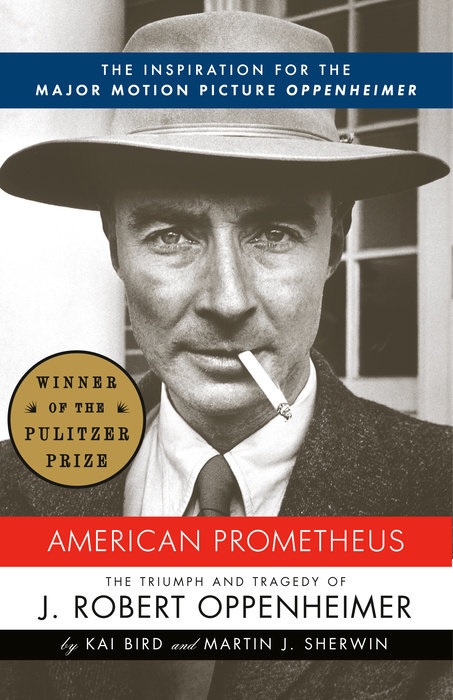 Christopher Nolan's Oppenheimer, starring Cillian Murphy as the titular theoretical physicist, opened last week to rave reviews and explosive box office success. Nolan's biopic is based on American Prometheus: The Triumph and Tragedy of J. Robert Oppenheimer by Kai Bird and Martin J. Sherwin, published by Knopf in 2005. The book took decades to complete. Sherwin began in 1979, several years after authoring A World Destroyed: Hiroshima and Its Legacies. He interviewed more than 100 people involved with Oppenheimer (who died in 1967) and compiled tens of thousands of pages of research, which sat unused until 1999. Bird, previously the author of several political biographies, helped turn Sherwin's research into what the Boston Globe called "an Everest among the mountains of books on the bomb project and Oppenheimer."
Christopher Nolan's Oppenheimer, starring Cillian Murphy as the titular theoretical physicist, opened last week to rave reviews and explosive box office success. Nolan's biopic is based on American Prometheus: The Triumph and Tragedy of J. Robert Oppenheimer by Kai Bird and Martin J. Sherwin, published by Knopf in 2005. The book took decades to complete. Sherwin began in 1979, several years after authoring A World Destroyed: Hiroshima and Its Legacies. He interviewed more than 100 people involved with Oppenheimer (who died in 1967) and compiled tens of thousands of pages of research, which sat unused until 1999. Bird, previously the author of several political biographies, helped turn Sherwin's research into what the Boston Globe called "an Everest among the mountains of books on the bomb project and Oppenheimer."
American Prometheus won the 2005 National Book Critics Circle Award and the 2006 Pulitzer Prize for Biography or Autobiography. Sherwin's final book before his death in 2021 was Gambling with Armageddon: Nuclear Roulette from Hiroshima to the Cuban Missile Crisis. Bird's most recent work is The Outlier: The Unfinished Presidency of Jimmy Carter, published in 2021. American Prometheus is available in paperback from Vintage ($25). --Tobias Mutter




